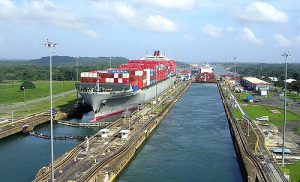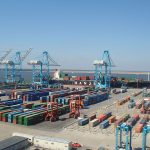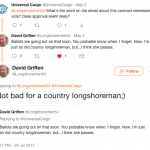How is the Panama Canal Expansion Working Out?

Picture: Panama Canal – Looking Back by Roger W.
It’s hard to believe it, but a year has already passed since the unveiling of the expanded Panama Canal. Plagued with delays and increases in costs, it once seemed the expansion project would never be complete. Now that some time has passed with the operation of the expanded canal, international shipping experts are starting to analyze whether the expansion was successful and who is benefitting most from the widened gateway between the Pacific and Atlantic oceans.
Xeneta CEO Patrik Berglund recently wrote an article on just that topic titled, “
The ultimate answer Berglund gives to the question he raises in the title is resoundingly in the affirmative as he finishes the article with, “yes, it would be fair to say the Panama Canal expansion has been a success to both importers, exporters, and consumers on both sides of the Pacific Rim.”
Berglund also highlights the benefits of the Panama Canal expansion for carriers with:
The expansion was a god-send for the cash-strapped competitive industry. At no cost to the carriers, they now have legitimate options on shipping to the US, and are able to utilize either or both depending on the volumes of cargo they are carrying. If times are good, Supra-Panamax’s and Mega’s can use the Suez Canal, while in leaner times, carriers can rely on their 13,000 TEU vessels and transit through Panama. Or they can operate both; with the ports of both Baltimore and Savannah working hard to improve their intermodal reach into America’s industrial Midwest and south.
While the expansion appears good for the international shipping industry all around, the results do not actually appear to be as positive for Panama and the Panama Canal Authority according to Berglund’s article.
While the debt incurred by the Panama Canal Authority (ACP) is separate from Panama’s sovereign debt, many say the 12% ROI promised is specious and repayment will not be as smooth as promised. Transit tolls cannot be raised above those charged by the Suez Canal Authority, and with China-USEC transit times via either canal within 36 hours of each other, Panama offers no serious advantages; in truth China-Canada WC -rail offers the best service into the US Midwest and Canada as far east as Montreal. That’s sobering competition.
That does not mean the Panama Canal expansion is unsuccessful for Panama and the ACP, but it will take some time for the costs of the expansion to be made up.
In fact, Berglund does say in the article that the expansion was “absolutely not” a waste of time and money for Panama, adding, “Panama had to either enlarge the canal or fade into shipping obscurity.”
For the last several years, we’ve watched U.S. East Coast ports work on expansions and infrastructure improvements themselves to receive bigger ships traveling through the Panama Canal, hoping to increase their share of the import market over West Coast ports, especially from China and other major Asian exporting countries. Those efforts continue.
Berglund’s article addresses the cargo growth East and Gulf Coast ports are experiencing, but also points out how U.S. exporters are benefitting from the canal expansion, not just importers:
Surprisingly, equal beneficiaries of the expansion seem to be increased exports of LNG, LPG, coal, and grain from the US Gulf to Asian ports that are now able to transit through the expanded Panama Canal, along with shipments of grain coal, and soybeans that are now flowing to China and Asia from Colombia, Argentina, and Brazil…
Xeneta’s PR Manager Fernando Nikolic reached out to Universal Cargo, sharing this article with us. We thought it was a good, easy to read article and decided to share it with you, our readers.
If you have an article on international shipping you think we’d enjoy or that would benefit our readers, comprised largely (but certainly not exclusively) of shippers who import and export out of the U.S., please feel free to share it with us.




